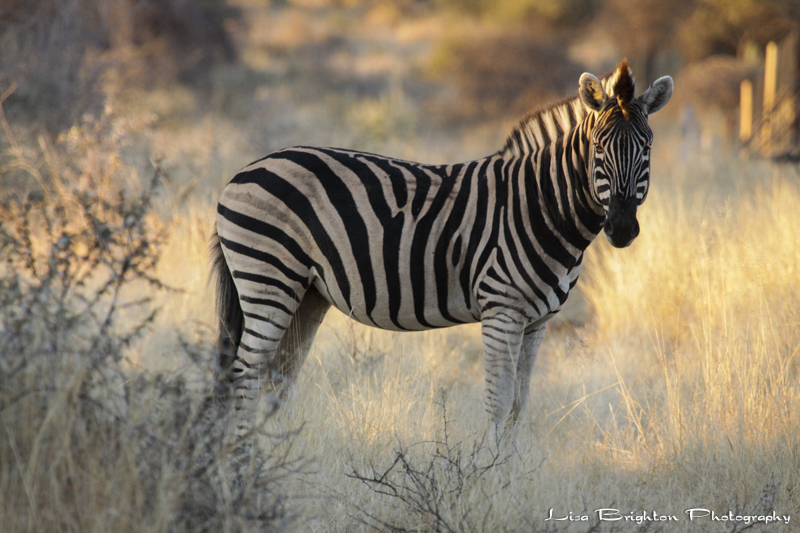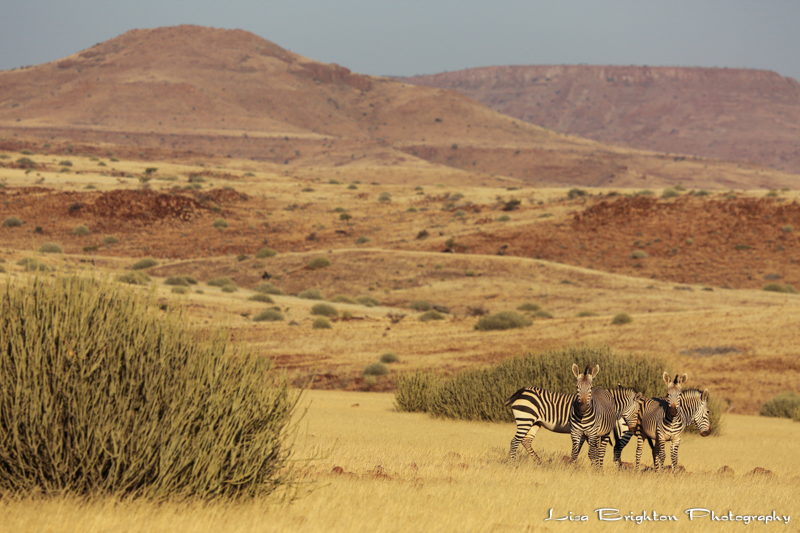5. Loner
 “There’s a zebra!” I blurt out, excited to see my first zebra of the journey. “We’re going to see a lot of zebra,” my guide Tarry says in his thick African accent, making the “zeb” rhyme with “web”. “When we head north, there are going to be so many for you to photograph. They will be in herds — on the savannas, crossing the roads, at watering holes.” Though I like the sound of that, I also like how this one looks as a loner. “But this one is all alone. It’s the first one, and look how pretty the light is.” I feel like I’m being whiny because when we got into the Jeep 45 minutes ago at the crack of dawn, we all agreed that we were looking for leopards to photograph. “I’ll be quick. I promise.” Tarry kindly indulges me and maneuvers through the rough terrain, moving the Jeep as close to the zebra as he can without scaring it away. It is still a good distance away from us, but I’m glad that I can zoom in and make it seem closer.
“There’s a zebra!” I blurt out, excited to see my first zebra of the journey. “We’re going to see a lot of zebra,” my guide Tarry says in his thick African accent, making the “zeb” rhyme with “web”. “When we head north, there are going to be so many for you to photograph. They will be in herds — on the savannas, crossing the roads, at watering holes.” Though I like the sound of that, I also like how this one looks as a loner. “But this one is all alone. It’s the first one, and look how pretty the light is.” I feel like I’m being whiny because when we got into the Jeep 45 minutes ago at the crack of dawn, we all agreed that we were looking for leopards to photograph. “I’ll be quick. I promise.” Tarry kindly indulges me and maneuvers through the rough terrain, moving the Jeep as close to the zebra as he can without scaring it away. It is still a good distance away from us, but I’m glad that I can zoom in and make it seem closer.  Thank goodness for my 100-400mm lens. Through it, I can look into the zebra’s eyes and take an image that captures its unique facial markings. There is no doubt about it, zebras are distinctive animals with their unique stripes and eyes positioned on the sides of their heads. “Okay, got it. Thanks, Tarry.” As he pulls away and we pursue the leopards, I briefly look at the zebra’s image on my camera. I remember reading that zebras have excellent eyesight, and it’s believed that they can see in color. I’m glad that I can see this one in black and white with all the soft colors and contrasting textures around him on this beautiful morning.
Thank goodness for my 100-400mm lens. Through it, I can look into the zebra’s eyes and take an image that captures its unique facial markings. There is no doubt about it, zebras are distinctive animals with their unique stripes and eyes positioned on the sides of their heads. “Okay, got it. Thanks, Tarry.” As he pulls away and we pursue the leopards, I briefly look at the zebra’s image on my camera. I remember reading that zebras have excellent eyesight, and it’s believed that they can see in color. I’m glad that I can see this one in black and white with all the soft colors and contrasting textures around him on this beautiful morning.
